
kt_Engineer
-
Posts
82 -
Joined
-
Last visited
Content Type
Profiles
Forums
Gallery
Events
Blogs
BMT Wiki
Collections
Store
Posts posted by kt_Engineer
-
-
On 11/4/2023 at 10:19 AM, Outlawfleet said:
Problem: my crd151 is howling and has a ton of metal in the top housing. It’s also causing a BAD vibration.
$6,000 for a reman. I can not seem to find a good used take out in a 3.79 ratio.
im being told CRD92/93 will fit my housing, but they do not come in the same ratio as the 150s so I would have to change both diffs.
92/93 seem to be much cheaper and more available.
Would y’all recommend ditching the 151/150 in favor of the 92/93?
Thoughts and opinions?
Thanks.
CRD92/93 is old version that has been in production for 40+ years and replaced with CRD150/151 in 2009. The newer axle has slightly better design and rating and capable of pulling upto 150,000 lbs for linehaul applications. You can try to find closest ratio CRD92/93 but will need to ratio match with smaller or bigger tires so as to not burn up inter-axle powerdivider.
-
On 12/10/2023 at 11:34 PM, JoeH said:
In my hunt for off-road traction for my concrete trucks, I've come across some interesting info. Older CRD92/93 rear carriers apparently had a limited slip style differential option, and those carriers would be CRD921/CRD931. The newer CRD1501/1511 version uses an air cylinder with fork to slide a locking clutch through the differential to lock it. Does the CRD921/931 do similar? In the CRD92/93 service manual it seems to imply that it's an automatic torque biasing cage with wedges much like the automatic inter-axle power divider.
Does anyone on here know anything about these rears? I suspect trying to aquire a pair of these differentials would be like trying to bottle unicorn farts.
CRD150/151 was introduced in 2009 to replace CRD92/93. This is the first Mack axle series with Differential Lock option (i.e fork/clutch to lock left and right wheels). CRD921/931 is the Interwheel power divider/Limited Slip Differential (identical to Inter-axle differential with peanuts and cam differential) between wheels. CRD92/93 doesn't have differential Lock. CRD150/151 is also offered with Limited Slip differential option and referred to with CRD1501/1511 designation. Interwheel Power Divider differential does automatic torque biasing with 3:1 torque sent to non-slipping wheel but if other wheel is one ice with zero traction then you are going nowhere. With diff lock you should be able to move even if one wheel is on ice. Diff Lock is extremely inexpensive compared to IWPD (Inter Wheel power Divider) version
-
 1
1
-
-
On 12/14/2021 at 7:02 PM, DieselDog5.9 said:
Have a CV713 Granite, with an AI 400 that is finicky to drive, (working on the cure following the dead dog thread closely) however just need more gears.
Current Transmission is a Mack T309L/LL great low speed reverse and low gear, short on gears in the high side, the rpm spread in the gears is to wide for the limited rpm range the Ai400 makes power in, and a mean shifting SOB.
Solution: picked up a transmission the owner states is and 18 speed, makes noise when on the low side. This transmission is a T2180, not sure about any particulars, suchs as gearing and what not, my truck being an 03 would be a 300 series transmission, is this T2180 a bad choice?
I have a lot of experience rebuilding Eaton Fuller transmissions, I have rebuilt the back box on a Mack 18 speed 300 series (318L/LL Maybe) and the parts are somewhat pricey for the HI/LO clutch pack from Mack.
Originally I was going to swap a Fuller 18 but thought going mack for mack would be less fabrication an coming up with parts.
If you rebuilt T318 and T318LR then T2180 is not a bad choice. T318 is evolution of T2180 with some improvements. Gear ratios should be very identical.
-
Could be CRD180/181 which was launched in 2018 and replaced CRD202/203.
-
CRD92/93 has been in production since 1950-60 and discontinued and replaced with CRD150/151 in 2009 (crd125/126 is a sub-family of CRD150/151 with 125,000 lbs GCW for linehaul introduced in 2012). There are different differential gears versions for axle shafts during this time. In 2002-2003, Mack introduced fabricated housings with industry standard R-Series spindles to commonize wheel end equipment. The proprietary spindle fab steel housing and also cast iron housing was still available. It your truck has relatively new fab housing most possibly it has new R-Series spindles. For CRD125/126 R-Series you need Right side axle shaft P/N: 23821464. If you have inter-wheel diff lock on CRD125/126 (front, rear or both) you will need L.H. Axle shaft P/N:23821484. With out inter-wheel diff lock the L.H. axle shaft P/N will be 23821437. If you have proprietary spindles then you can still get the axleshafts for CRD125/126 (the newer CRD92/93 axleshafts will fit CRDD15/126).
-
 1
1
-
-
On 9/28/2021 at 7:51 AM, 880joe said:
Does anyone know if a crd 125 & 126 will fit in same housings as the 92 & 93.
Yes. It will fit but make sure the axle housing has R-Series spindles and/or find matching axle shafts. Also, I am assuming you did home work on ratio change. CRD125/126 has only 2.54, 2.66 & 2.83 axle ratio. CRD92/93 fastest ratio starts at 3.86.
-
On 9/29/2021 at 8:49 PM, Dalton1 said:
I have a 07 CV713 with a T310 10 speed transmission, it recently started making a bit of a growling noise in 4/5 and 9/10, noise is faint in 4th gets louder in 5th and gets louder the higher the RPMs get. As soon as I shift to high range in 6th the noise completely goes away till 9th where it starts up again and worse in 10th.
Odd thing is the noise comes and goes, sometimes I'll be driving 55mph in 10th and the noise will suddenly come and go.
So for I have changed oil using 50w synthetic trans fluid. There was some very fine metal on the magnets, torqued rear yoke bolt, (have had the loosen up before causing range shift issues) check range fork actuator o rings as well as looked under rear top cover, looked ok.
Any ideas where to look next would be greatly appreciated!
Mack T300 should use 80w90 Mack GOJ or 75W90 GOJ Plus oil for best gear and bearing life. 50W synthetic is unapproved as far as I remember.
-
 1
1
-
-
What transmission do you have? If it is 12-speed MDrive, something seems to be confusing TECU where it is trying to go to low range (from high range) or could not go to Hi-Split in main box. Maybe splitter synchronizer is going bad.
-
On 8/7/2021 at 7:58 AM, Gravelguy413 said:
Can carriers from a 38k suspension be swapped into 44k axle housings ? Is there any difference between the two carriers?
The carriers can be swapped from 38k to 44k axle housings. Mack top mounted carriers are swappable all the way from 34k - 58k axle housings. The only unique version is 65k axle housing with CRD95/96 carriers. These won't fit on any other axle housing or vice-versa.
-
 2
2
-
-
On 7/13/2021 at 8:41 PM, Chandler Lloyd said:
what is the difference between a mack 46000lb rear and a mack 52000lb rear?
There are 2 versions of the housing - fabricated steel with 14mm wall thickness housing sold at 52k lbs GAWR in past with some spring suspensions(11mm is sold @ 46k lbs GAWR with camelback but 14mm with air suspension) and cast iron housing sold at 46k lbs GAWR & 52K lbs GAWR.
The housing itself on axle ductile version is same for 46k & 52k version but suspension (with different spring packs) can be different. With cast ductile version there was Mack proprietary spindles (obsoleted in 2018) and industry standard R-series spindles (offered since 2010). The R-series is available in drum and disc brakes while Proprietary version is only available with drum brakes.
-
 2
2
-
-
-
23 hours ago, Evan Rocks said:
Mackpro, it gets to 7th, no grinding. It's not always 7th either, just goes into limp mode and stops shifting.
Check your ABS sensors on steer and drive axles. Transmission is looking for output shaft sensor along with ABS sensors to figure out vehicle speed and needed gear shift. If one of the sensor is loosing signal intermittently then transmission might go into limp mode.
-
 1
1
-
-
6 hours ago, DragoMack said:
I bought this truck used over a year ago so I guess I’m dealing with all the negligence of the previous owner. He did tell me the front axle is a replacement. Truck does do tough work running through loose dirt pits. Although I will also note that the front tan dif was repaired recently so my guess is that during the install my mechanic didn’t properly tighten the bolts of the torque arm. Could you further clarify about the fire aft facing the wrong direction? Is that the rod mounted to the frame in the rear? Is the “pin” like part supposed to be facing the cab and the torque rod on the back side of the bracket?
There are different setups based on suspension. I was thinking it has to either look like the Image 1 (in this case it shows a rear-rear carrier) or Image 2 (which is a front drive axle) where fore-aft rod it going towards the cross-arch but will not have the straddle bracket in thee back. It would have a TELMA bracket mounted towards the front of the the carrier with a transverse torque rod mounted of the cross frame-rail. Your current setup has nothing to prevent front drive axle from moving side-to-side. This would be acceptable for some suspension configurations (but not all) if I remember correctly.
-
Also, I noticed something that doesn't make sense. The fore-aft torque rod is in the wrong direction. It should be mounted facing towards the front/cab and not towards the rear. Also the front-axle has the straddle type bracket but without transverse torque rod (mounts of the side frame rail). The rea-axle has tapered torque rod bracket and transverse torque rod (as it should). This does not look right (also strange front-rear has different bracket type than rea-rear).
-
- Popular Post
- Popular Post
19 hours ago, DragoMack said: Your driver is not telling you the truth. It takes incredibly amount of force to bend the torque rod like that. Considering none of the other components are damaged, my best guess is one end of the torque rod was coming loose and truck hit a huge pot hole causing the axle to articulate pushing the torque rod against the cross-arch and bending it (look for marks on cross arch where it would have been hit by the torque rod).
Your driver is not telling you the truth. It takes incredibly amount of force to bend the torque rod like that. Considering none of the other components are damaged, my best guess is one end of the torque rod was coming loose and truck hit a huge pot hole causing the axle to articulate pushing the torque rod against the cross-arch and bending it (look for marks on cross arch where it would have been hit by the torque rod).
Either that or Hulk tried to pull the rod out to hit someone when your driver was not around the truck.
-
 3
3
-
On 3/13/2021 at 1:50 PM, R.E.D said:
So the Mack transmission is out and a rebuilt 8 low low is going to replace it..I know this topic has beaten to death in this site so I won't get into it.yet I have a couple questions.
Was told that these t3xx trans use the same pto as the eaton , not like the old t20xx trans that used different pto.IS THIS TRUE?
Also is the programming at mack for the eaton trans necessary to run? Or is it just for the speedo calibration?
Please advice.
RED
The side mount 6-bolt & 8-bolt PTO follow the SAE guidelines for both T300 and Eaton so you should be able to mount the PTO without issues. This was also the case for T200 (I thought). With manual transmission nothing needs to change for programming. The K-Factor etc will need to updated if you change out the axle ratio to read the road speed right.
-
 1
1
-
-
Yes. 75W90 Synthetic oil should not be a problem.
-
 1
1
-
-
18 hours ago, TPH25ND said:
I'm looking at buying a used Mack with MP8 and Mdrive. Probably a CXU613. I'm looking at doing in state hauling up to 105,000 lbs, but also need the ability to bring a 90,000 lb load out of a soft field. Most used trucks a see are 2.47 and 2.60 axle ratios and 3.08's. I know the 2.47's and 2.60's are no good for what I want. What ratio's would be the best for what I want to do? Is 3.08 adequate or do I need to be at 3.25, 3.58 or more? How about overdrive vs direct transmissions? Most I see are overdrive. The price range I'm looking at, doesn't allow me to look at the 13 or 14 gear mdrives, just the 12 speeds. Any advice would be appreciated.
Pardon my ignorance - When you say soft field, do you mean unmaintained surface, loose dirt? mDrive OD has a starting gear ratio of 11.74:1 and can be used to haul 90,000 to 105,000 lbs with ratios around 2.79 - 3.08 for well maintained roads. The biggest issue you will face when in loose sand is not so much drivability but these relatively fast ratios will not have much mechanical advantage at the wheels. During wheel slip situation, there is more potential to have higher torque be sent into wheels and if a wheel-hop happens tremendous amount of torque spike goes through the system destroying axles, thru-shafts, axle-shafts, differential halves and drive-shafts. Improper use of diff. locks, power launch or rock-free function makes it even worse. A deeper ratio (3.56 and above) will help alleviate the situation but not fool-proof.
Deeper ratio comes at the expense of your sweet spot at 65MPH being 1500RPM range and above leading to lesser fuel economy. Direct Drive will seriously compromise top-speed though the starting gear ratio of 14.94:1 will help with startability in off-road conditions.
-
- Popular Post
- Popular Post
https://www.youtube.com/watch?v=2yhvlbLfvQk&feature=share
-
 3
3
-
 1
1
-
2 hours ago, kscarbel2 said:
This development begs the question of what happened to the Wright Speed-powered Volvo-Mack LR refuse project? Did Volvo decide to ignore it and run with their in-house tech? Ian Wright is sharp.
https://www.waste360.com/trucks/behind-wheel-look-macks-lr-electric-truck-dsny
Volvo is also partnering on LIGHTS (Low Impact Green Heavy Transportation Solutions) California initiative for Drayage and other applications
https://www.greencarcongress.com/2020/06/20200619-volvo.html
https://www.volvotrucks.us/news-and-stories/press-releases/2020/february/all-electric-vnr-models/
-
On 7/31/2020 at 2:37 PM, CrashTestDummy said:
That's another great chart - thank you!
Unfortunately I can't really share any other information (they've 'let people go' for this sort of thing in the past so I'm erring on the side of caution), but this is also very helpful.
Anything done outside the scope of normal application always voids Manufacturing warranty and OEM will not be liable for anything that could go wrong (on your "contraption").
If the carrier is being driven through some electric motor/engine with a reduction gear-box in between and another reduction boxes on each axle output end, the carriers can be expected to fail relatively quickly in 50-100 hr window depending on input torque/RPM. Depending on load applied either a gear tooth bending failure or gear surface fatigue failure can occur. Most possibly #2, #3 or differential bearings will go bad before gear failure. Changing out bearings @ 50hr interval can extend the carrier life.
CRD150-151 (Ratio 3.11 to 6.53); CRD180-181 (Ratio 3.79 to 7.08) and CRD125/126 (2.54, 2.66 & 2.83) have a differential lock. The diff. lock can be engaged using a pressurized air or mechanically pushing the piston (using a threaded bolt) to engage the diff. fork clutch. Engaging the diff. lock will allow torque to be driven through one side/both side of axle shafts but could potentially fail the axle shaft and load one of the differential bearing more than other side.
Since CRD180-181 etc are tandems (2-drives connected with intermediary inter-axle shaft) so driving through CRD181 (Rear-rear carrier makes more sense. CRD180 will have inter-axle differential/PDLO which will need to be locked out to transmit torque to gears).
Perfect straight angle drivelines are never a good idea as U-Joint fretting and other issues will scew the torques. Slight U-joint angle (<1 degree) will work well. CRD181 with targeted ratio around ~ 4.45:1 to 5:1 might be better choice if input motor/engine have sufficient HP/Troque/Speed range along with gearboxes (with appropriate gear ratios).
-
 1
1
-
-
23 hours ago, CrashTestDummy said:
Good afternoon everyone!
I am working on one heck of a contraption I guess you could say, and the Mack drop-in differentials/housings appear to be an ideal configuration for what we're working on (unfortunately, about all I can say about the use is that they won't be driving wheels and tires - but you're welcome to speculate!). I have a pretty extensive automotive background so I can generally speak the language, but I am struggling a bit with finding more specific data on things like carrier models, available ratios, HP/torque ratings, and things of that nature for things in the heavy truck world (in contrast to, say, a Dana 60 where one click in Google will yield anything you could possibly want to know).
So far I have been basically just collecting bits and pieces of information from use parts dealers and eBay listings, but I was wondering if there's some sort of resource for this sort of information that I am overlooking. Even just a brief rundown on the different models and what can be learned from the designations would be helpful!
Thanks in advance for any help anyone is willing to give - it's greatly appreciated!
Take care,
-CTD
If you can be atleast a bit specific as to what Engine/Motor you are planning to run, input and output RPM's, Torques, expected life etc I might be able to help. CRD92/93 is out of production since 2009. The newer carrier series are CRD125/126 (125,000 lbs GCW - Linehaul); CRD150/151 (150,000 lbs GCW - Linehaul), CRD180/181 (180,000 lbs GCW - Linehaul); CRD95/96 (235,000 lbs GCW - Linehaul). CRD95/96 has been in production since 1945 and doesn't follow newer naming designation.
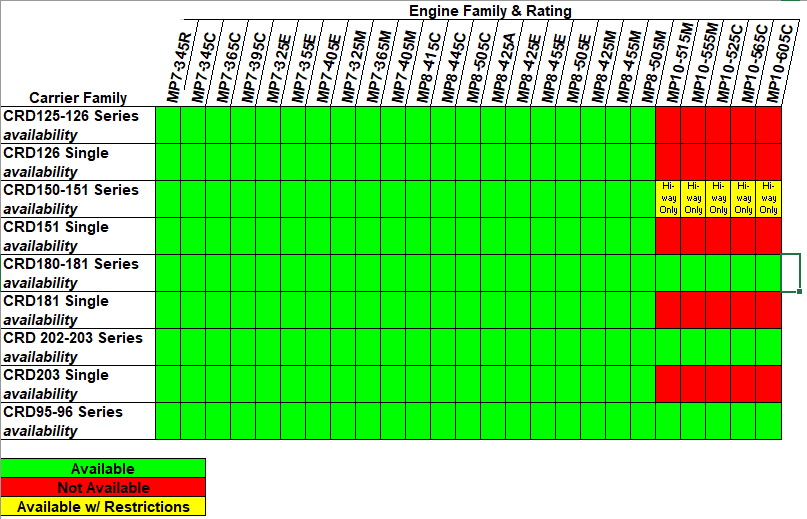
-
On 7/7/2020 at 4:11 AM, snowman_w900 said:
Thanks for that info @kt_Engineer .
I haven't pulled the hubs or bearings on yet, but I an planning on doing that so I can replace seals and if needed I'll put fresh bearings in.
It looks like they reused the original aluminum hub pilot hubs from what I can tell at a glance, but after seeing your post ill be taking a closer look at everything.
Would the older Dana housing be of better quality in your opinion than the Meritor of that era (2005) in your opinion?
I think Meritor housing has been swapped out with Dana for some reason. I would assume Meritor failed, so I would recommend keeping the Dana housing.
-
23 hours ago, snowman_w900 said:
I bought a 2005 Mack CHU tandem axle daycab. Its got CRDPC92 / 93Mack rears on Mack/Hendrickson air ride.
I'm getting ready to sand blast the frame and repaint it. I was taking the identification tags off to keep from destroying them, and here's what I found:
Front rearend axle housing tag is the fist photo,
And then rear axle housing tag is the second.
The Meritor front housing is original, the rear looks to have been replaced at some point. Is there any pros or cons to the Meritor vs Dana?
This is interesting. Mack axle has been designed by manufactured by Mack Engineering and was produced inside Mack facilities until 1986 (in Hagerstown, MD). Management decided to source the assembly to Dana and they were making it to Mack design from 1986-2002. From 2003-2009 Meritor was assembling it to Mack design and from 2009-2015 by American Axle and Manufaturing. The assembly was brought back in-house (to Hagerstown Pwt facility) in 2015.
Coming back to your question when Dana was making Mack fabricated steel axle housing the spindles were Mack proprietary design (dimensions are different than industry standard specs). When transition to Meritor happened, the spindles were changed to industry standard R-Series spindles (while at same time making Mack prop spindle version for After-Market support). 19QF4409P9/25080121 (new number) has been terminated.
Meritor tag are internal numbers and not valid Mack P/N so can't tell much about it. Meritor made some housings in 2005-2007 with a manufacturing defect where the stamping had sharp inside corner radius causing housing to fail in some severe applications. The issue was corrected and later design improvements were made to increase the inside corner wall radius so avoid manufacturing issues in future. All axle housings were not produced by Meritor or Dana but by tier-2 suppliers.
-
 1
1
-


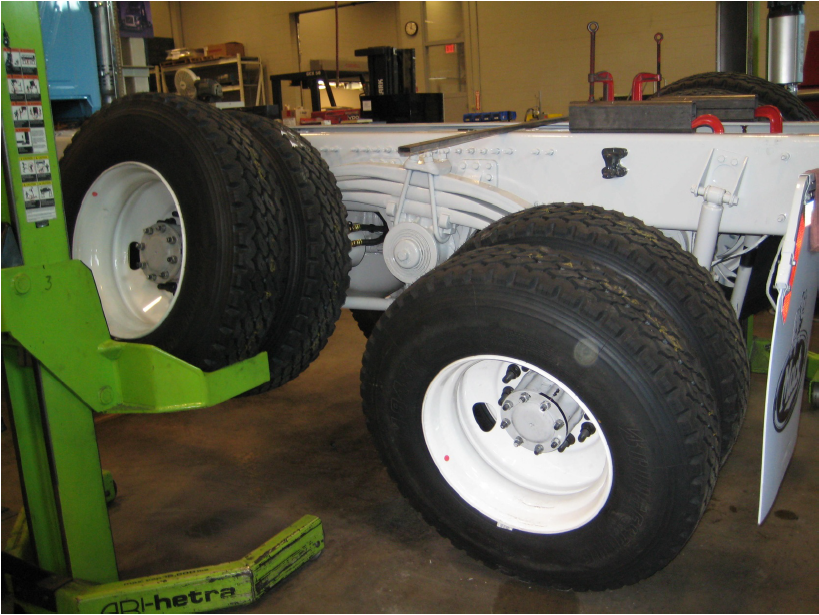
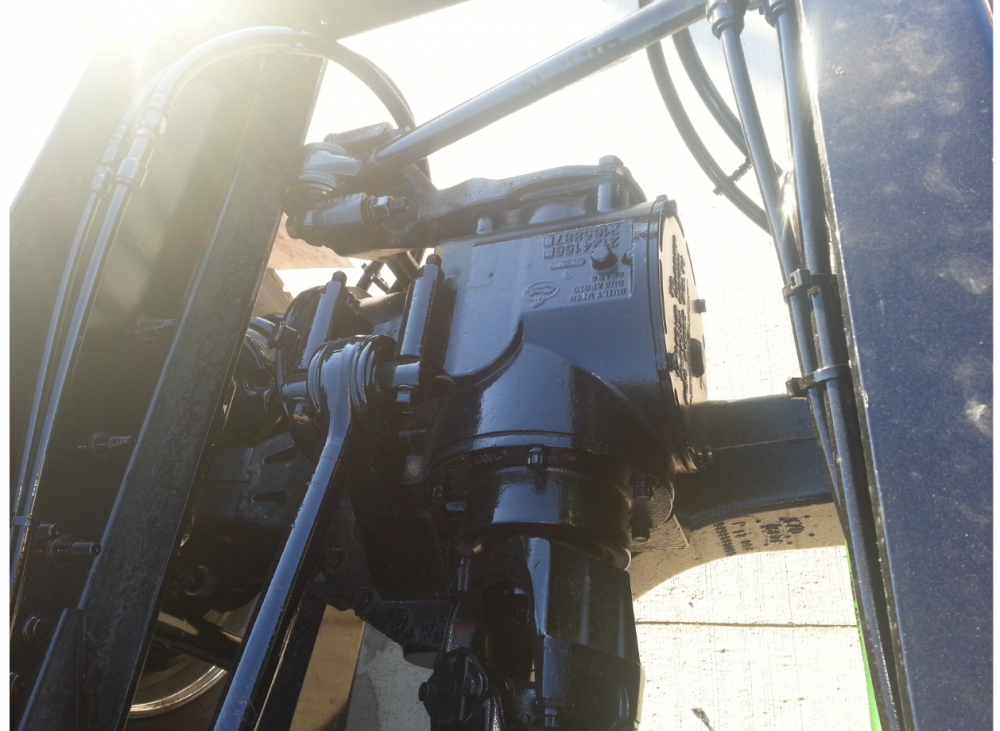
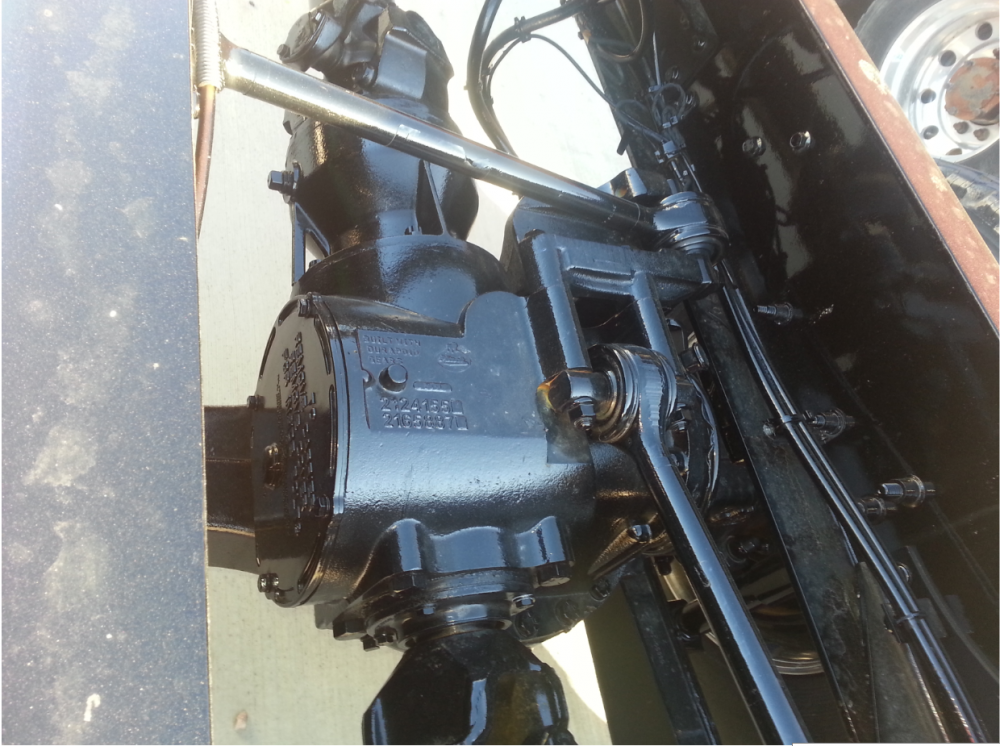
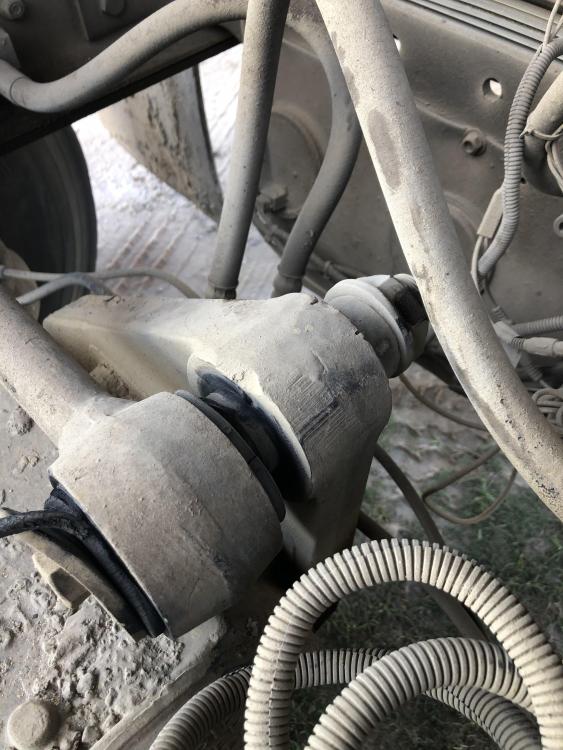
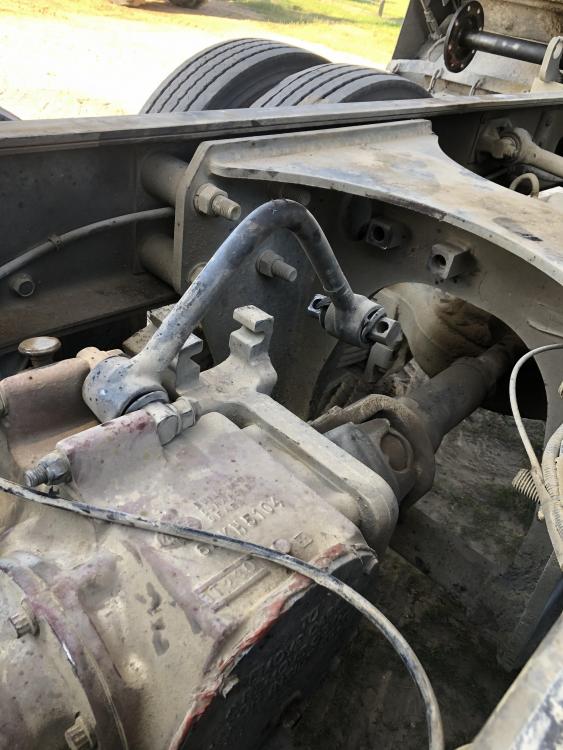
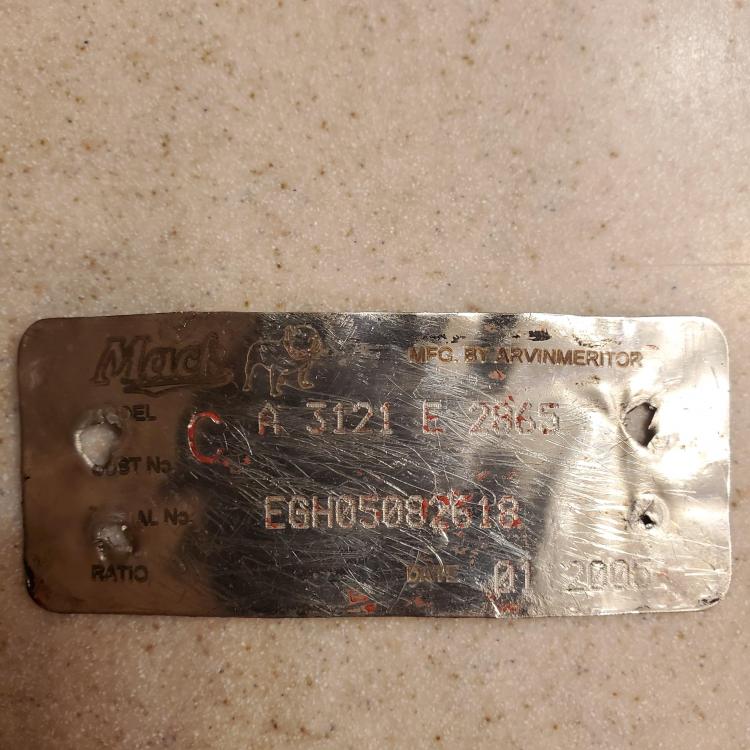
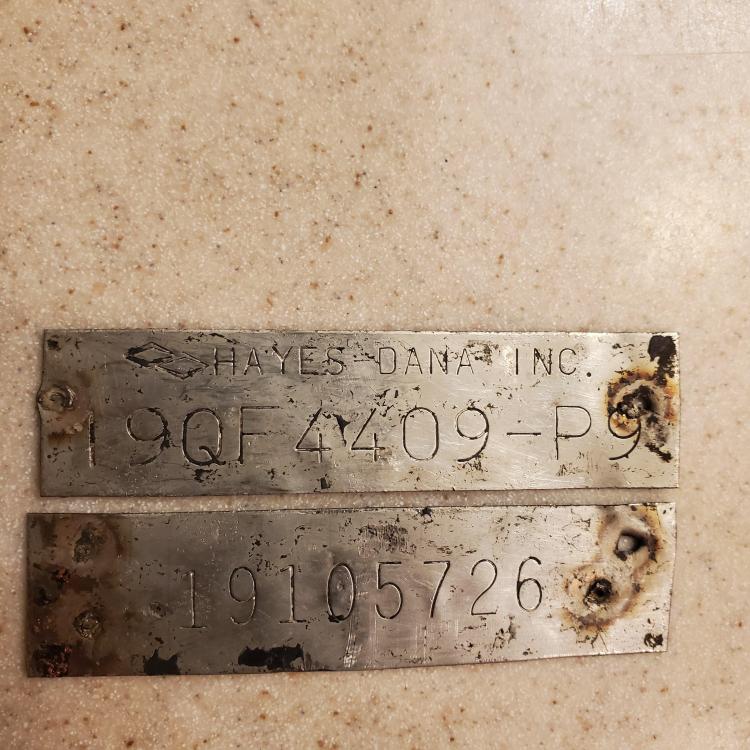

Mack rear identification
in Driveline and Suspension
Posted
Mack did not introduce diff lock until 2009 so this definitely doesn't have one.